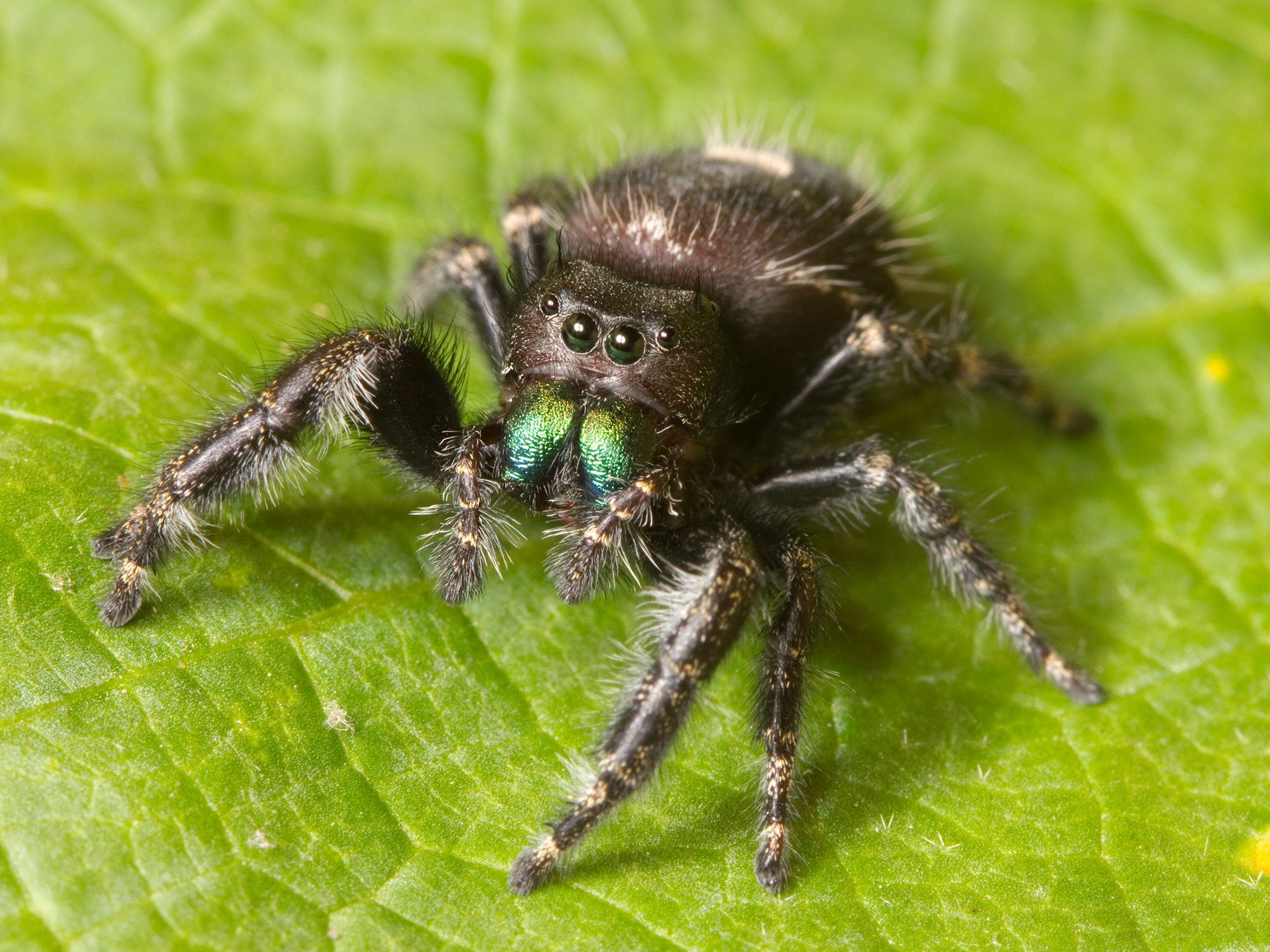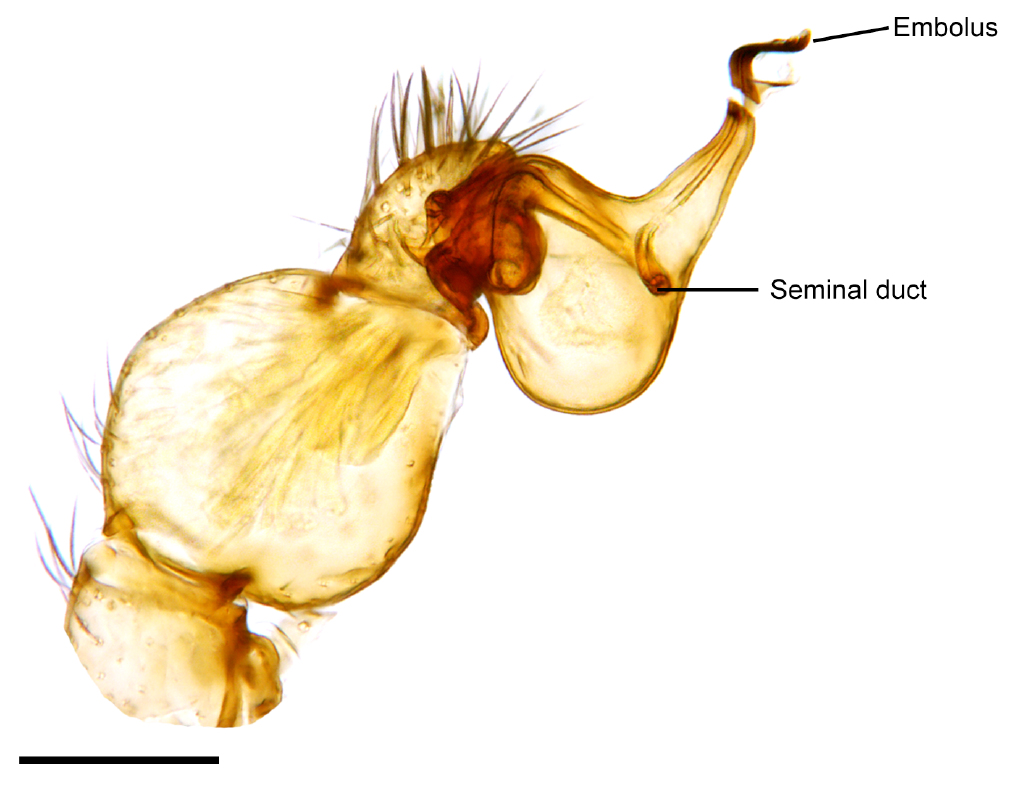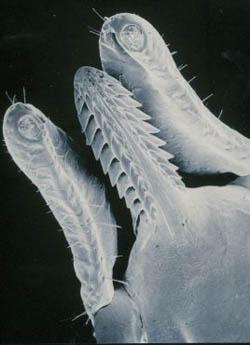|
Gnathosoma
The gnathosoma (from Greek , ' = "jaw" and , ' = "body") is the part of the body of the Acari (mites and ticks) comprising the mouth and feeding parts. These are the hypostome, the chelicerae and the pedipalps. It is also called the capitulum (however, this word also has other meanings). It is separated from the main body of the animal (the idiosoma) by a flexible section of the cuticle called the circumcapitular furrow or circumcapitular suture. See also * Subcapitulum The subcapitulum (from Latin ''sub'', "under", and ''capitulum'', "small head"), also known as infracapitulum, hypognathum or hipognatum, refers to the ventral part of the gnathosoma (the part of the body comprising the mouth and feeding parts) or ... References Arachnid anatomy Acari {{Acari-stub ... [...More Info...] [...Related Items...] OR: [Wikipedia] [Google] [Baidu] |
Tick
Ticks (order Ixodida) are parasitic arachnids that are part of the mite superorder Parasitiformes. Adult ticks are approximately 3 to 5 mm in length depending on age, sex, species, and "fullness". Ticks are external parasites, living by feeding on the blood of mammals, birds, and sometimes reptiles and amphibians. The timing of the origin of ticks is uncertain, though the oldest known tick fossils are from the Cretaceous period, around 100 million years old. Ticks are widely distributed around the world, especially in warm, humid climates. Ticks belong to two major families, the Ixodidae or hard ticks, and the Argasidae, or soft ticks. '' Nuttalliella,'' a genus of tick from southern Africa is the only member of the family Nuttalliellidae, and represents the most primitive living lineage of ticks. Adults have ovoid/pear-shaped bodies (idiosomas) which become engorged with blood when they feed, and eight legs. Their cephalothorax and abdomen are completely fused. In ad ... [...More Info...] [...Related Items...] OR: [Wikipedia] [Google] [Baidu] |
Ixodes Hexagonus (aka)
''Ixodes hexagonus'', also known by the common name hedgehog tick, is a tick species in the genus ''Ixodes''. It is a parasite of the European hedgehog The European hedgehog (''Erinaceus europaeus''), also known as the West European hedgehog or common hedgehog, is a hedgehog species native to Europe from Iberia and Italy northwards into Scandinavia and westwards into the British Isles.Harris, S. .... Appearance Characteristically the female adult hedgehog tick have a heart shaped scutum. The scutum of males covers the entire idiosoma. Another characteristic feature the humped tarsus on the first leg pair. In colouration they are a dark brown. There is a distinct lateral groove, festoons are sometimes apparent. It occurs throughout the United Kingdom, sparsely in the North West, increasing in density to the South East. Although it does not usually occur on rodents or birds, and is "described as a nest-dwelling hedgehog specialist. It is also found on foxes, mustelids (includi ... [...More Info...] [...Related Items...] OR: [Wikipedia] [Google] [Baidu] |
Capitulum (other)
capitulum (plural capitula) may refer to: *the Latin word for chapter ** an index or list of chapters at the head of a gospel manuscript ** a short reading in the Liturgy of the Hours *** derived from which, it is the Latin for the assembly known as a chapter ** a typographic symbol (⸿), to mark chapters or paragraphs, now evolved into the pilcrow Botany * Capitulum (flower), a type of flower head composed of numerous tiny florets, characteristic of the family Asteraceae * Capitulum (moss), the top of a ''Sphagnum'' moss plant with compact clusters of young branches; also the apothecium (fruiting body) of lichens of the order ''Calicium'' Zoology * the capitulum of the humerus in vertebrates * the gnathosoma of ticks and mites * in stalked barnacles, the armoured portion within which the appendages and most of the viscera are located * ''Capitulum'' (genus), a genus of goose barnacles * a part of the female Lepidoptera genitalia The study of the genitalia of Lepidoptera ... [...More Info...] [...Related Items...] OR: [Wikipedia] [Google] [Baidu] |
Tree Of Life Web Project
The Tree of Life Web Project is an Internet project providing information about the diversity and phylogeny of life on Earth. This collaborative peer reviewed project began in 1995, and is written by biologists from around the world. The site has not been updated since 2011, however the pages are still accessible. The pages are linked hierarchically, in the form of the branching evolutionary tree of life, organized cladistically. Each page contains information about one particular group of organisms and is organized according to a branched tree-like form, thus showing hypothetical relationships between different groups of organisms. In 2009 the project ran into funding problems from the University of Arizona. Pages and Treehouses submitted took a considerably longer time to be approved as they were being reviewed by a small group of volunteers, and apparently, around 2011, all activities ended. History The idea of this project started in the late 1980s. David Maddison was ... [...More Info...] [...Related Items...] OR: [Wikipedia] [Google] [Baidu] |
Internet Encyclopedia Of Science
David Darling (born 29 July 1953 in Glossop, Derbyshire) is an English astronomer, freelance science writer, and musician. Darling has published numerous popular science works, including ''Life Everywhere: The Maverick Science of Astrobiology'' in 2001 and ''The Universal Book of Mathematics ''The Universal Book of Mathematics: From Abracadabra to Zeno's Paradoxes'' (2004) is a bestselling book by British author David Darling. Summary The book is presented in a dictionary format. The book is divided into headwords, which, as the ti ...'' in 2004. He maintains the online ''Internet Encyclopedia of Science''. A review of Darling's book ''Soul Search'', stated that "he develops a sort of scientific pantheism positing that, with death, we move from the narrow consciousness of our highly selective, reality-filtering brain to the wider, timeless consciousness of the unbound universe." [...More Info...] [...Related Items...] OR: [Wikipedia] [Google] [Baidu] |
Natural History Museum, London
The Natural History Museum in London is a museum that exhibits a vast range of specimens from various segments of natural history. It is one of three major museums on Exhibition Road in South Kensington, the others being the Science Museum and the Victoria and Albert Museum. The Natural History Museum's main frontage, however, is on Cromwell Road. The museum is home to life and earth science specimens comprising some 80 million items within five main collections: botany, entomology, mineralogy, palaeontology and zoology. The museum is a centre of research specialising in taxonomy, identification and conservation. Given the age of the institution, many of the collections have great historical as well as scientific value, such as specimens collected by Charles Darwin. The museum is particularly famous for its exhibition of dinosaur skeletons and ornate architecture—sometimes dubbed a ''cathedral of nature''—both exemplified by the large ''Diplodocus'' cast that ... [...More Info...] [...Related Items...] OR: [Wikipedia] [Google] [Baidu] |
Subcapitulum
The subcapitulum (from Latin ''sub'', "under", and ''capitulum'', "small head"), also known as infracapitulum, hypognathum or hipognatum, refers to the ventral part of the gnathosoma (the part of the body comprising the mouth and feeding parts) or the fusion of the palpal (of the pedipalps, the second pair of appendages) coxae (the point of union of the appendages with the body) and the labrum (the upper mouthpart) complex present in some arthropods on which the mouth, pedipalps, mouthparts and pharynx are generally located. It is delimited by the subcapitular apodeme (an ingrowth of the exoskeleton for muscle attachment), which separates it from the cheliceral (of the chelicerae, the first pair of appendages) frame. Acari The function or morphology of the subcapitulum can vary within acarines. In its central part, the hypostomal (of the hypostome, a harpoon-like appendage near the mouth) gutter in which the pincers are transformed into a serrated pricking system is formed ... [...More Info...] [...Related Items...] OR: [Wikipedia] [Google] [Baidu] |
Cuticle
A cuticle (), or cuticula, is any of a variety of tough but flexible, non-mineral outer coverings of an organism, or parts of an organism, that provide protection. Various types of "cuticle" are non-homologous, differing in their origin, structure, function, and chemical composition. Human anatomy In human anatomy, "cuticle" can refer to several structures, but it is used in general parlance, and even by medical professionals, to refer to the thickened layer of skin surrounding fingernails and toenails (the eponychium), and to refer to the superficial layer of overlapping cells covering the hair shaft ( cuticula pili), consisting of dead cells, that locks the hair into its follicle. It can also be used as a synonym for the epidermis, the outer layer of skin. Cuticle of invertebrates In zoology, the invertebrate cuticle or cuticula is a multi-layered structure outside the epidermis of many invertebrates, notably roundworms and arthropods, in which it forms an exoskelet ... [...More Info...] [...Related Items...] OR: [Wikipedia] [Google] [Baidu] |
Chelicerae
The chelicerae () are the mouthparts of the subphylum Chelicerata, an arthropod group that includes arachnids, horseshoe crabs, and sea spiders. Commonly referred to as " jaws", chelicerae may be shaped as either articulated fangs, or similarly to pincers. Some chelicerae, such as those found on nearly all spiders, are hollow and contain (or are connected to) venom glands, and are used to inject venom into prey or a perceived threat. In '' Pisaurina mira'', also known as the nursery web spider, the chelicerae are utilized to snatch the prey once it becomes within reach, facilitating the "sit-and-wait ambush predator" behavior. Both pseudoscorpions and harvestmen have structures on their chelicerae that are used for grooming (papillae in pseudoscorpions, cheliceral teeth in Opiliones). Types Chelicerae can be divided into three kinds: jackknife chelicerae, scissor chelicerae, and 3-segmented chelate chelicerae. Jackknife chelicerae The jackknife chelicera is subchelate ... [...More Info...] [...Related Items...] OR: [Wikipedia] [Google] [Baidu] |
Pedipalp
Pedipalps (commonly shortened to palps or palpi) are the second pair of appendages of chelicerates – a group of arthropods including spiders, scorpions, horseshoe crabs, and sea spiders. The pedipalps are lateral to the chelicerae ("jaws") and anterior to the first pair of walking legs. Overview Pedipalps are composed of six segments or articles: the coxa, the trochanter, the femur, the short patella, the tibia, and the tarsus. In spiders, the coxae frequently have extensions called maxillae or gnathobases, which function as mouth parts with or without some contribution from the coxae of the anterior legs. The limbs themselves may be simple tactile organs outwardly resembling the legs, as in spiders, or chelate weapons ( pincers) of great size, as in scorpions. The pedipalps of Solifugae are covered in setae, but have not been studied in detail. Comparative studies of pedipalpal morphology may suggest that leg-like pedipalps are primitive in arachnids. At present, t ... [...More Info...] [...Related Items...] OR: [Wikipedia] [Google] [Baidu] |
Greek Language
Greek ( el, label= Modern Greek, Ελληνικά, Elliniká, ; grc, Ἑλληνική, Hellēnikḗ) is an independent branch of the Indo-European family of languages, native to Greece, Cyprus, southern Italy (Calabria and Salento), southern Albania, and other regions of the Balkans, the Black Sea coast, Asia Minor, and the Eastern Mediterranean. It has the longest documented history of any Indo-European language, spanning at least 3,400 years of written records. Its writing system is the Greek alphabet, which has been used for approximately 2,800 years; previously, Greek was recorded in writing systems such as Linear B and the Cypriot syllabary. The alphabet arose from the Phoenician script and was in turn the basis of the Latin, Cyrillic, Armenian, Coptic, Gothic, and many other writing systems. The Greek language holds a very important place in the history of the Western world. Beginning with the epics of Homer, ancient Greek literature includes many works of l ... [...More Info...] [...Related Items...] OR: [Wikipedia] [Google] [Baidu] |
Hypostome (tick)
The hypostome (also called the maxilla, radula, or labium) is a calcified harpoon-like structure near the mouth area of certain parasitic arthropods including ticks, that allows them to anchor themselves firmly in place on a host vertebrate while sucking blood. The hypostome being present in almost all tick families suggests that hematophagy is the ancestral condition, as is the fact that life stages that do not feed on blood lack the organ. Some ticks of the Ixodidae family (hard ticks) secret a cement to strengthen the attachment. See also *Mandible (arthropod) 250px, The mandibles of a bull ant The mandible (from la, mandibula or mandĭbŭ-lum, a jaw) of an arthropod is a pair of mouthparts used either for biting or cutting and holding food. Mandibles are often simply called jaws. Mandibles are p ... References Arachnid anatomy {{Arthropod-anatomy-stub ... [...More Info...] [...Related Items...] OR: [Wikipedia] [Google] [Baidu] |
.jpg)






